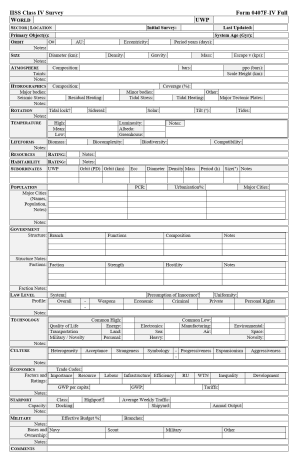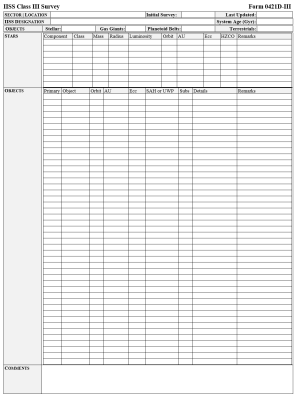Geir
Emperor Mongoose
Thanks for your interest, Dalton.Hi Geir,
I just joined the forums and saw this post.
I have been working on this project for my own purposes, on and off for over a year.
I have been working through a great deal of material, as well as figuring out how to include/support earlier versions of Traveller.
I started with astronomy texts and support from friends who are studying this (benefits of living in a university city)
The article in JTAS 6 about how the traveller hexagonal map is a 2d mapping projection of 3d space (a great deal of the original article was left out due to space considerations and it being boring to non math types) was part of my project.
I have been automating the process I came up with as well, but, everything started with die rolling mechanics (including proper odds of haveing systems appear, based upon stellar density)
With the knowledge of a hexagon on a traveller map, being a cubic parsec, ie ~34.64 cubic light years, a single hex has more than enough room for multiple barycentres (a series of far systems, if using CT/MT terms) with each barycentre having the possiblity of containing one or more stars.
Then the stars have multiple zones, based upon temperature etc (simple black body emmision) and each zone can have multiple orbits.
So, if you are interested, reach out to me and I can provide you with my material.
I also included BioDensity/BioDiversity/BioComplexity for detailing biospheres.
I am currently working out the process of how to convert existing CT/MT/T5/MGT2 stated systems into
I've been trying to balance 'real' vs. 'game' systems for I won't even admit to how long, but since about when classic book 6 came out. To keep with playability and compatibility, a lot of what is 'correct' needs to be slimmed down - barycenters was I thing I wanted to do, but no, it's not possible to solve the n-body problem with a spreadsheet, so it had to get cut back to orbits, which I am modifying (or paying more attention to fractional orbits - which was always there), but I have to keep them for compatibility. Same with multiple stars in a hex. T5 allows up to 8 in a star system and I sued that, but its still a system a hex and a 2D space.
I did 'borrow' and modify the Bio stuff from the v1 Tools of Frontier living, which are fairly workable (but, sorry Colin, I sort of went my own way a little)


